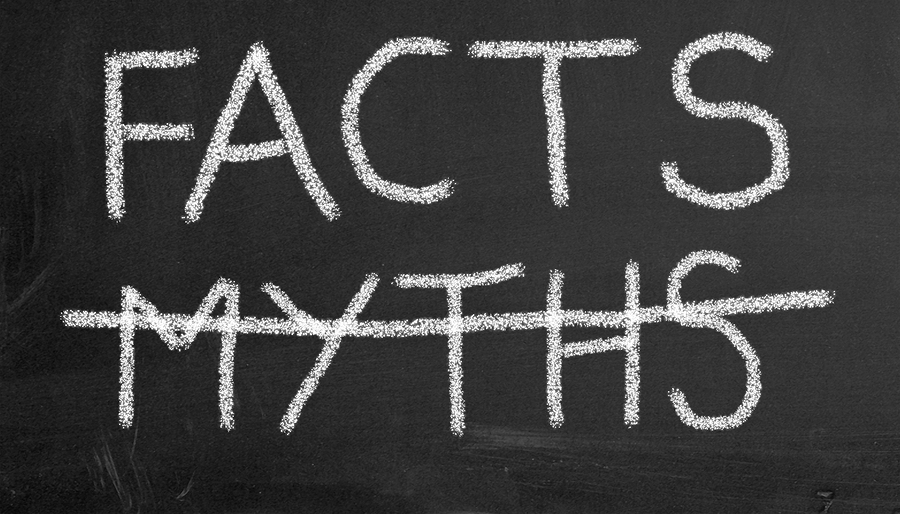I am not a conservative person. I’m totally okay with gender-neutral bathrooms, paid maternal leave and the right for women to have access to birth control / abortions. I’ve never factored in a person’s gender, race or sexual orientation when I considered them for employment, having only cared about if they had the necessary skills to do the work I needed of them. I’m not particularly interested in the personal lives of individuals unless studying their life helps me better understand the collective whole of humanity in some way.
I consider myself to be a Centrist. I believe I have a balanced viewpoint between the extremes of Liberalism and Conservatism. My religion would be considered humanism.
I point this out because I find myself getting more and more irritated at the amount of identity politics nonsense floating around the media sphere these days which is devoid of rationality and spreads falsehoods in our society. Much of this nonsense is based on a gross oversimplification of how many industries actually work, with the accusers purposefully ignoring the true complexities of the machinery of that industry in order to make an emotional plea to serve their agenda.
One of these common pleas is that “inequality exists between what men and women are paid” or “inequality exists because there isn’t an equal number of men and women working a desirable job“.
These are flawed statements. To begin with, ‘equality’ doesn’t mean every job in the world has an equal number of men and women working in it. It means that regardless of social class all people have equal educational opportunities to develop the skills necessary to find suitable employment and when they apply for jobs, only their qualifications are considered and not age, gender, race, sexual orientation or social class.
And that is the kind of society we enjoy in the United States. This kind of equality is guaranteed by law and social programs such as grants. And if a company violates these laws in their hiring process they subject themselves to expensive litigation and fines.
So, what these women want is not equality. They already have equality. What they want is inequality; they want opportunities to be given to them largely on the basis of their gender, and they use irrational arguments to justify the existence of a non-existent problem.
You don’t create equality with a different kind of inequality. That is counter-productive.
There might indeed be instances where media executives have discriminated against women but there is no evidence that it is some industry wide conspiracy practice. All of the examples used as proof of such a thing are irrational arguments based on drawing improper conclusions from data.
Let’s talk about some of these instances where data is warped to create a false narrative of discrimination, and other factors than just “discrimination!” are able to explain the gaps.
Myth: The Implication That a High Gender % In an Occupation Must Mean Discrimination
Most of the arguments that there is discrimination in the film industry depends on looking at how many women work in certain occupations like directors, cinematographers, actors, etc. The argument is nothing more than “Because the majority of people in these occupations are men, discrimination must exist“.
This is an unfounded conclusion. If that logic held merit then occupations which are predominantly held by women must also be the result of widespread gender discrimination against men. For example, according to US census data in 2011 only 9% of nurses were men and 91% were women. In public schools, 80% of teachers are female.
The Department of Labor lists a variety of occupations where over 75% of the jobs are held by women.
So, is there a conspiracy against hiring men in jobs predominately held by women, or can other factors explain it? I believe other factors can, but to find out you would need to stop just looking at raw numbers and start asking people why they work the jobs that they do, rather than imagine reasons why they choose that occupation and pass this hypothesis off as if they were fact.
You simply don’t know why people choose the occupations that they do unless you ask them why.
I’m unaware of any survey the Department of Labor has done asking people why they chose the job they do. Maybe it should start doing them so that data can be compared to the hiring figures and sense can now be made from them?
Conclusion: Just because an occupation is predominately held by one gender does not automatically mean the only factor that can explain this is discrimination.
Myth: Pay Differences in Jobs Between Men and Women Must Be Due to Discrimination
Some conclusions are based on incorrect assessment of the data and this is one of them.
A 2016 Department of Labor analysis of 2014 makes the claim that incomes between men and women working the same jobs found on average, women tended to earn 85% less than men but this figure is inaccurate because it is based on the fact in some jobs women earned 90% of what men were paid and in other jobs they earned 70%.
To claim that all women earn 85% less than men based on these figures is dishonest reporting.
There are further problems with this study that are evident simply by looking at the chart; rather than analyse incomes for specific occupations it generalizes the data by organizing people based on the industry they work in and then looks at their salaries on the basis of gender alone. This approach ignores factors such as seniority (how long someone has been working in that job) which plays a heavy role in any occupation dominated by union groups or the presence of overtime pay (it is known that on average, men work 50 hours or more per week and women do not). When you factor in the dramatic rise of single mothers in the USA, it’s no wonder that men are able to take more overtime than women; a significant portion of the women in the work force are single mothers who cannot take overtime as often as bachelors or married men can.
You must also factor in that analyzing by industry segment rather than specific occupation is much too broad of a brush to be painting with; let’s look at just one segment here; computer and mathematical. This is a very broad category; if you work as a mathematician then you could earn up to $100K a year but if you work as a computer repair technician then you can only earn up to $42K. When you factor in that male graduate students dominate mathematics programs at universities, it’s no wonder why there could be a pay gap here. The vast majority of mathematicians are men.
We must also consider the economic value of the industry segment the work is done in. Take the modeling industry as an example of this; female models make considerably more than male models. In 2012 the top 10 earning male models earned a combined $8 million compared to the $83 million their female counterparts earned that same year. Why does this pay gap exist? Well, the difference is because the women’s fashion industry is vastly more profitable than the male fashion industry is. While both male and females are working as models, the economics of male and female modeling are different because they have different market values. Thus the pay a model receives is proportional to the business their modeling generates for the industry they model for. That’s how capitalism works.
Conclusion: Judging wage disparity by industry rather than a comparison of specific occupations and their special factors (namely, seniority, experience and overtime pay) is sloppy work that has lead to inaccurate assessments. If journalists actually did investigative reporting instead of just regurgitating press releases they would see the flaws in these reports and stop championing a false narrative of gender pay discrimination when there is no factual evidence for such.
Myth: Actress Pay Gap Must Be Due to Discrimination
Due to the complex nature of how the film industry works (there are both powerful unions and skilled agents at work here, unlike in most other industries) there are many people who think there is a pay discrimination against female actors based on their gender. This is due to an improper understanding of how an actor is valued.
In Hollywood, the financial value of an actor to a project is predicated on a couple factors:
- How much did their last film earn?
- What was the actor’s role in that film (i.e. were they a lead, supporting, etc.)?
- How important is this actor to the project (i.e. what is their role in the film)?
- How much was this actor paid in their last film?
- Can we get someone else who can add the same value for less money? Is anyone else available?
These five factors will determine how much the actor makes in a project because their agent creates a ‘rate’ for the actor based on how much the actor was paid for their last project and how well that film did at the box office. Whether the producers are willing to pay the actor the rate they ask for depends on how much the producers project the film to generate at the box office (based on the three factors I will mention below).
So it doesn’t matter how many Oscars your films have been nominated for because awards shows are bullshit. They are nothing more than extensions of marketing and people who work in the industry know this. The only thing that matters is the above five factors because they relate to how film revenue projections are calculated and projects are pitched to financiers.
During the greenlight process, the formula most executives use for determining how much money a film will earn is determined by looking at the average between three figures.
- The Director’s last movie
- The first lead’s last movie
- The second lead’s last movie.
The average between these figures is how much they expect a new film to earn. This is because the assumption is the bulk of a film’s appeal is based on the audience pull of celebrities such as directors and leading actors.
Now keeping this in mind let us look at the often cited leaked Sony emails related to American Hustle. Journalists who are ignorant about the above formula look at these emails and cry gender discrimination.
The reality is compared to Christian Bale (Dark Knight Rises earned over $1B at the box office), Jennifer Lawrence (Silver Linings Playbook earned $236.4 million) was not worth as much to the film according to the way the industry calculates an actor’s value.
(The above article I cited claims Lawrence starred in Hunger Games: Catching Fire before American Hustle was greenlit but this is completely inaccurate; Catching Fire was released 2 months before American Hustle came out, which means the market performance of Catching Fire could not have been known at the time she was attached to American Hustle. This is a wonderful example of bad journalism creating false narratives if ever there was one )
Even if you look at what was her best performing film at the time (Hunger Games earned $694M) you still can’t make the financial justification that Jennifer Lawrence had equal financial value at the box office to Christian Bale. She did not star in a film that had recently grossed a billion dollars like he had.
Conclusion: Many journalists do not understand how the pay for high profile actors are determined and draw inaccurate conclusions which actresses and their agents are more than happy to take advantage of so they can pressure studios into paying them more than they are worth just because they are a woman for fear of a PR backlash. The actresses and their agents have financial incentive to deceive the public about the nature of these negotiations because it means an extra couple million dollars for them. We’re already seeing this, such as in the case of Zoe Saldana who is mad that a studio refused to pay her additional millions so she could hire a babysitter to watch her kids.
You’re not championing equality when you support multi-millionaires trying to milk studios for extra zeros to support a lavish lifestyle of wasteful spending.
Myth: Women Have Fewer Leading Roles Than Men Due to Discrimination
There’s a report by “The Center for the Study of Women in Television and Film” (the name sure reeks of impartiality, doesn’t it? /sarcasm) that claims the film industry is anti-women because of bogus reasons like “only 12% of recognizable protagonists were women” (who defines what “recognizable” means?). They go on to cite a lot of nonsense about how many female characters had speaking roles compared to males, and whatnot.
The problem with this study is that it focused on the “top 100 highest grossing films of 2014”. The 4th highest ranking film of that year was Maleficent, whose leading protagonists were played by Angelina Jolie and Elle Fanning. The highest grossing film was Transformers: Age of Extinction where the main protagonists were a race of robots, and the second is The Hobbit: Battle of Five Armies which is an adaptation of The Hobbit (which originally had zero females in any speaking role, so the film adaption added a bunch of female characters). The comic book adaptation Guardians of the Galaxy was the 3rd highest grossing and features several prominent females, along with Zoe Saldana playing Gamora.
When you look at best performing film #5, it was The Hunger Games: Mocking Bird which indisputably has a female lead (Jennifer Lawrence).
So, there’s no evidence to suggest Hollywood has any bias against producing films with female protagonists as strong characters. Really, if there is any pattern to notice here it is that the majority of films that do well at the box office are adaptations of other media. The roles of characters are determined by the authors of the original novels / comics / manga, etc. There is no secret agenda against women by film producers; they are simply greenlighting movies based on their ability to make money, and by being a proven quality in some other market (such as the novel or comic book markets). Cases like The Hobbit actually demonstrate that producers are more likely to insert female characters into a work which originally had none, even if it means diverting away from the source material by the introduction of wholly original characters.
The report therefore is a collection of information and then uses that information to draw an unsupported conclusion about the way the industry works –that there is an agenda against positive depictions of women, or something. I think the data seems to indicate that whether a character is male or female is determined by the whimsical creative inspirations of the original author of the work. Therefore claiming that authors are bias against women unless half their characters are female is an absurd statement to make. Most story-tellers these days are simply re-imagining older stories and drawing on mythical archetypes. For example, whether the mentor to the hero / heroine is male or female depends on whether the inspiration for the character is more Merlin or Athena.
If you’d like an example of how this whimsical creative process works, I’ll give you some from one of my own novels, Pandemonia Chronicles:
- Anu Malsumis is male because he’s inspired by the portrayal of Lucifer from Paradise Lost (in fact a lot of the story elements have inspiration from Paradise Lost).
- Most of the supporting demon characters (such as Belial) are based on their counterparts from the Ars Goetia which determined their gender.
- Gestalt (the protagonist) is male because his personality is based on recollections of myself as a teenager and his name is a reference to the concept of Holism which is part of the underlying theme of the story.
- Jofur is male because he’s inspired by Zeus / Jupiter (Jofur is actually a Nordic version of Jupiter), as well as an actual teddy bear I had as a child.
- Rebel is male because he’s based on an actual male dog I had as a pet as a child, with mixings of Cerberus.
- Zaria is female because she is based on the title character of The Last Unicorn. Her name comes from Slavic goddess of the same name who is associated with light and the heavens.
- The penguin captain is based on a similar minor character from the videogame Xenogears whose personality I happened to like.
- Melia is based on the nymphs of the same name in Greek mythology.
- Fontus is a kappa, and I’ve only seen male kappas in their various media depictions. In mythology Fontus was a minor deity involved with wells and springs which I thought fit the character.
- Deus is female because I wanted to establish a kind of Yin-Yang of necessary opposites between Anu and Deus. Because Anu is male I made Deus female. Her personality is largely based on Hera from Greek mythology, a jealous and wrathful fertility goddess.
As you can see from my example the choices an author makes with their characters are always intentional, but often driven by a capricious heart. A character can be determined by something as simple as having been based on a person the author knew or a character in a story they liked. Because of this truth which is common to all storytellers, it is folly to draw conclusions about “gender equality” solely based on how many male and female characters an author created for their fictional universe. The gender of the character is probably the least important thought that went into the creation of the character, as the gender is primarily determined by the source material used to create the character.
To suggest an author is somehow bigoted because they don’t purposefully create an equal ratio of male and female speaking parts in a work is an argument in favor of censorship. It’s the most anti-intellectual argument that could be made. To suggest such a thing ought to be standard is opposition to a person’s right to free expression. It shouldn’t matter how many male or female speaking parts exist in a structured story; the only thing that matters is if the story has enough characters to adequately be told and if the characters chosen best help the author tell the story the audience will enjoy. That is it. Period.
Naturally if you are utterly ignorant of the theory of mythic hero story structure which is used by everyone in the business who works in creative then I suppose it could be seen as a gender bias, but I would also say that someone oblivious to mythic hero story structure has no business analyzing movies to begin with.
Conclusion: There is no bias against female characters in the film industry. The gender of characters is selected by the authors of the work based on which gender best supports the mythic archetype role the character is intended to play. It is an entirely creative decision. To insist that all stories have an equal number of male and female characters is a call for design by committee — which is antagonistic to the creative process.
Myth: Female Producers in Animation Is Less Common Because of Discrimination
At the San Diego Comic Con in 2016 there was a WIM (Women in Animation) presentation that had the following slide in their presentation.

There is a very obvious problem with that statistic. Just because 60% of animation students might be women doesn’t mean 60% of animation creatives should be women (“creatives” doesn’t just mean you animate, in this context it means you’re a show-runner so essentially a producer).
Firstly, the statistic describes how many students are women and doesn’t focus on whether or not they actually passed the course or what their grade point averages were i.e. how many of the students actually demonstrated they had the skill level necessary to find work.
Secondly, the statistic ignores that the ability to animate is only part of the skill-set necessary to be a producer, you also need management and writing skills. These are not always taught in animation schools, especially at community college animation programs.
Thirdly there is a huge bottle-neck when it comes to becoming a showrunner in animation; the vast majority of animation is done in Asia not in the USA, and in Asia the model is to adapt comics and novels. There is diminished opportunity to be a showrunner and pitch original projects in the States because these shows must require funding. Generally it costs about $2M to produce a 13 episode half hour show. The very notion that if the industry was “fair” to women that men and women would have equal ratios of show-runners is based on the folly notion that people are owed $2M to make their show idea a reality just because they are a certain gender. That’s not how it works. It’s based on your ability to sell your idea to investors.
When you are dealing with a job that requires four sets of highly specialized and different skills (writing, animation, management and salesmanship) there is no rational way you can look at this presentation slide and think the argument is anything but nonsensical.
I take a lot of issue with these arguments because it distracts people from doing what is necessary to become a show-runner, and makes them think the industry is just out to hold women down when it’s actually the vast majority of people have no idea how to sell their shows to investors. And then you have the female producers who do know how to sell a show, but adopt this stance because they think they might be able to pressure a studio into creating some kind of “diversity” program where a network has to greenlight x number of shows from women and this will make it easier for them to earn money, since the industry has a tendency to hire experienced showrunners over fresh talent (because the experienced showrunners are a known quantity and this is a business, not a charity).
If such a diversity program was implemented, the experienced female producers would monopolize the opportunities and they know this. So their primary motivation in misrepresenting the facts of how the industry works is not to create “gender equality” but rather to create an arena for themselves in which they need only compete with other experienced female producers, and not any of the other experienced male producers.
Conclusion: The gender of a producer is simply not important. What is important is the pitched project, its ability to make money for investors and the producers’ ability to convince stakeholders to invest into the project.
tl:dr:
Trying to condense an answer to all the world’s questions into a simple gender ratio is a very flawed way of looking at the world and ignores the actual complexities of reality.
Because I enjoy stories, I think it’d be awesome for more opportunities to exist for men and women to produce movies and TV shows but I also know this is a complex business. Intentionally ignoring the complexities might make for a snappy headline and get people riled up (which Gawker-style sites love, because clickbait = ad revenue), but spreading misinformation will never lead to a positive outcome for society. People need to make decisions based on accurate information; if they make choices based on false data they will make choices against their own interests.
Ignoring reality and choosing to believe in a fantasy version of the way the world works is how garbage like Ghostbusters (2016) gets produced. My generation waited 27 years for a third Ghostbuster movie and instead of getting a quality story, we instead got a $300M (production + marketing) dumpster fire. This could have been avoided if real market research had been conducted but it was not because the ideological hold of a false gender war narrative was too strong a pull on the minds of the producers, financiers and the mainstream press.
Worse, championing these arguments takes attention away from the women who really do live in places where the legal protections of the United States do not exist. Places where women are still forced into child marriages and traded for cattle. Where violent rape is commonplace and divorce impossible.
For women who live in first world countries to create imaginary crimes for the sole purpose of trying to secure a better financial arrangement for themselves is morally irresponsible. It’s not feminism and it’s not equality. It’s just greedy and dishonest.
I do not doubt there are sexist people out there. There are men who discriminate against women, and women who discriminate against men. This is obvious just by looking at the outlandish inflammatory statements people make about a person based on their gender alone. But the existence of sexist people does not mean there is a conspiracy among every employer in the United States to discriminate on the basis of gender. To draw such a conclusion from reports that ignore the complex data in favor of an over-simplified explanation is mistaken, and will lead to artificial increases in wages in an effort to create “equality” and the obvious outcome of these wage increases is unstable inflation in the market. Our economy is already strained as it is; trying to implement a socialist approach to salaries that ignores factors like seniority, experience and skill and focuses purely on gender as the single most important factor is a recipe for economic disaster.
If you want to fight genuine gender inequality you won’t find that battlefield in the United States. Go to the countries like Congo, Pakistan and Somalia that actually have these problems because the women who live in these countries would love to have your imaginary pay gap problems be their reality.




